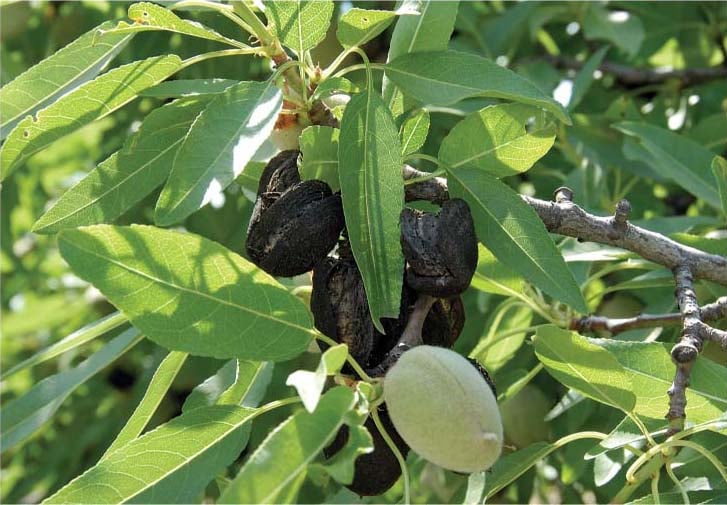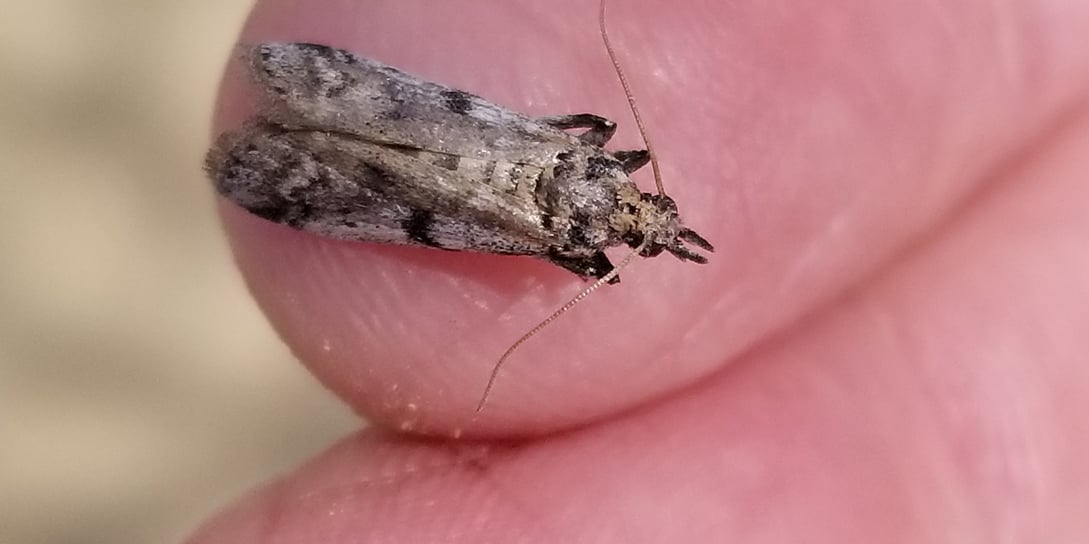For California growers managing almonds, pistachios, or walnuts, preventing navel orangeworm requires year-round vigilance and effort.
A well-timed and efficient harvest—getting nuts on the ground, dried, and out of the orchard as quickly as possible—sets the stage for a healthy crop in the year to come. By now most growers also know the importance of diligent winter sanitation, aiming to keep mummy nuts below the recommended thresholds of two mummies per tree in the northern part of California, or one in every five trees in the south.
But what about growers who take these steps and still struggle with navel orangeworm damage? Increasingly, a mating disruption strategy is the next step.
Rise of mating disruption methods for NOW
Research on pheromonal communication amongst navel orangeworm dates back as far as the 1970s, but commercially available tools are relatively new.
“It can take a long time to isolate and identify insect pheromones, and even longer to develop methods to synthesize them for commercial use,” explains Emily Symmes, Ph.D., a University of California Cooperative Extension integrated pest management advisor in the Sacramento Valley region.
A number of researchers have worked on navel orangeworm in recent years, leading to the development of various mating disruption products now available to growers. Today, mating disruption is being used on an estimated one-third of California’s nut crop acreage.
There are currently three technologies used to deploy synthetic navel orangeworm pheromones in the field.
Programmed aerosol canisters
These canisters are placed in trees (roughly 1-2 per acre) in purpose-built housing called a cabinet. The canisters emit pheromones at regular intervals—commonly every 15 minutes—during evening hours when moths are most actively looking for a mate. The majority of manufacturers install, maintain, and later remove the canisters for their grower customers.
Meso dispenser
Impregnated with pheromone, these thin strips of rubber-like material look similar to tags and hang in the canopy of the tree. They require a higher density of use (roughly 20 per acre) and emit a constant, low level of pheromone.
Both the aerosol canisters and meso dispensers are set up in spring and used throughout the season. Recent studies suggest the two approaches yield similar results when used correctly.
Flowable application
In this method of deployment, synthetic pheromone is sprayed onto trees in a "micro-encapsulated" formula—mist-like beads that rest on the leaves and emit pheromones over time. Sprayable pheromones need to be reapplied throughout the season and are estimated to last about 30 days, depending on environmental factors including rain, heat, and wind. As the most recently developed of the three methods, spraying has only one year of usage data and is still being refined for orchard use.
Disrupting moths' reproductive cycle can reduce damage from navel orangeworm. (USDA file photo.)
Researchers stress a comprehensive approach
Houston Wilson, Ph.D., is a University of California Cooperative Extension specialist with the Kearney Agricultural Research and Extension Center. He's seeing growers successfully use mating disruption to limit navel orangeworm damage to below two or even one percent of the crop.
“Mating disruption looks very promising, and the data from almonds looks good," he says. "It will be interesting to see how effective it can be when implemented over larger and larger acreage.”
Even so, Wilson thinks of pheromones as just one element in a multi-pronged strategy for navel orangeworm. "With this insect, it’s necessary to use every tool available—including mating disruption.”
Symmes agrees. “With this pest in particular, no singular pest management tactic is going to get you to the damage level that the growers, industry, processors, and marketers want," she says. "You’re really asking a lot of a conventional spray program or a mating disruption program if you’re not sanitizing."
Ultimately, a navel orangeworm strategy is less about looking for the silver bullet than playing a numbers game. Disrupting the moths' reproductive cycle won't prevent at least some of them from mating successfully by chance—but the smaller the resulting population of larvae, the easier it will be to manage infestations with conventional insecticides.
 Keeping mummy nuts below recommended thresholds requires a comprehensive approach that includes winter sanitation practices. (UCANR file photo.)
Keeping mummy nuts below recommended thresholds requires a comprehensive approach that includes winter sanitation practices. (UCANR file photo.)
Getting started with mating disruption
Rather than relying on general information, consult with your PCA to establish a plan that accounts for the size and shape of your orchards—as well as variable local factors such as typical wind conditions. Ceres Imaging customers can choose to share access to their aerial imagery with their advisors, so they can easily refer to the data in designing a strategy. Extension staff and customer representatives from various product manufacturers can also help.
For more information on mummy nut standards, traps, and sprays, visit the University of California Cooperative Extension navel orangeworm resource page.
Pest and disease Almonds Research Pistachios Tree nuts Walnuts

